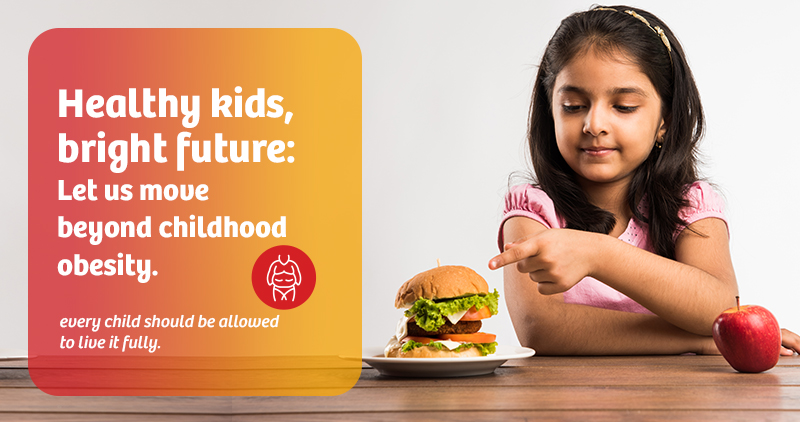

By Dr Snehal Patel
Consultant Paediatrician & Neonatologist
Jan 28 , 2025
Childhood is a cherished part of life; every child should be allowed to live it fully. Children should be able to explore, indulge in various outdoor games and activities, and even eat as they please. However, increasing reliance on technology, the advent of social media, and the narrowing of outdoor spaces are pushing children to spend more time indoors.
Globally, over 390 million children and adolescents aged 5–19 years were overweight in 2022, including 160 million who were living with obesity. Numbers are increasing due to uneven schedules and lifestyles.
In India, approximately 3.4% of children fall into the overweight or obese category. It emphasises the urgent intervention of parents and other stakeholders for proactive measures to prevent, educate, and manage childhood obesity.
In India, approximately 3.4% of children fall into the overweight or obese category. It emphasises the urgent intervention of parents and other stakeholders for proactive measures to prevent, educate, and manage childhood obesity.
Parents are the first to notice that their child is overweight compared to his/her peers. Obesity is diagnosed by calculating body mass index (BMI), which is measured as weight (in kgs)/ height (in metre2). BMI values to diagnose obesity in childhood require the use of BMI charts rather than specific values. A child is diagnosed as obese if BMI is >95th percentile on standard CDC BMI charts.
Weight gain is most often the result of an imbalance between daily calorie intake and calorie use. A persistent positive calorie balance (calorie intake>calorie use) eventually leads to weight gain.
Nutrition—A high-calorie diet is a primary risk factor for obesity. High-calorie foods such as sweets, baked goods, overeating of cheese, desserts, and aerated drinks, especially Coca-Cola, Thumps-Up, Maza, etc., have caused a recent increase in the prevalence of obesity.
Lack of exercise—Time spent in sedentary activities such as watching television, playing video games, and using social media(screen time) has increased dramatically in the past few years. It is no surprise that this has coincided with the highest rates of increase in childhood obesity.
Genetic factors – Children with either parent with Obesity are at a higher risk of being obese. Environmental factors like a high-calorie diet and poor physical activity further exacerbate it.
Genetic factors – Children with either parent with Obesity are at a higher risk of being obese. Environmental factors like a high-calorie diet and poor physical activity further exacerbate it.
Genetic factors – Children with either parent with Obesity are at a higher risk of being obese. Environmental factors like a high-calorie diet and poor physical activity further exacerbate it.
Childhood obesity increases the risk for Type 2 diabetes, Increased Cholesterol levels, high blood pressure and fatty liver disease. In adolescent girls, weight gain is associated with the risk of developing polycystic ovarian disease (PCOD). In addition, obesity leads to poor body image and lack of self-esteem, behavioural and learning problems and depression.
Maintaining a healthy, balanced diet and encouraging regular physical activity from early childhood can go a long way in preventing obesity. Some useful measures are:
First and foremost, treatment is a modification of lifestyle and physical activities. Parents need to monitor it in detail and guide the child in the same. After that, if required, consult a subject expert and follow the advice. Never buy medicine or any weight loss supplements over the counter for your child; that may be harmful.
It is important to remember that childhood obesity is modifiable, and early diet and physical activity changes will have long-lasting benefits for the child.
KD Hospital has a state-of-the-art paediatrics and best neonatal department with experienced experts.